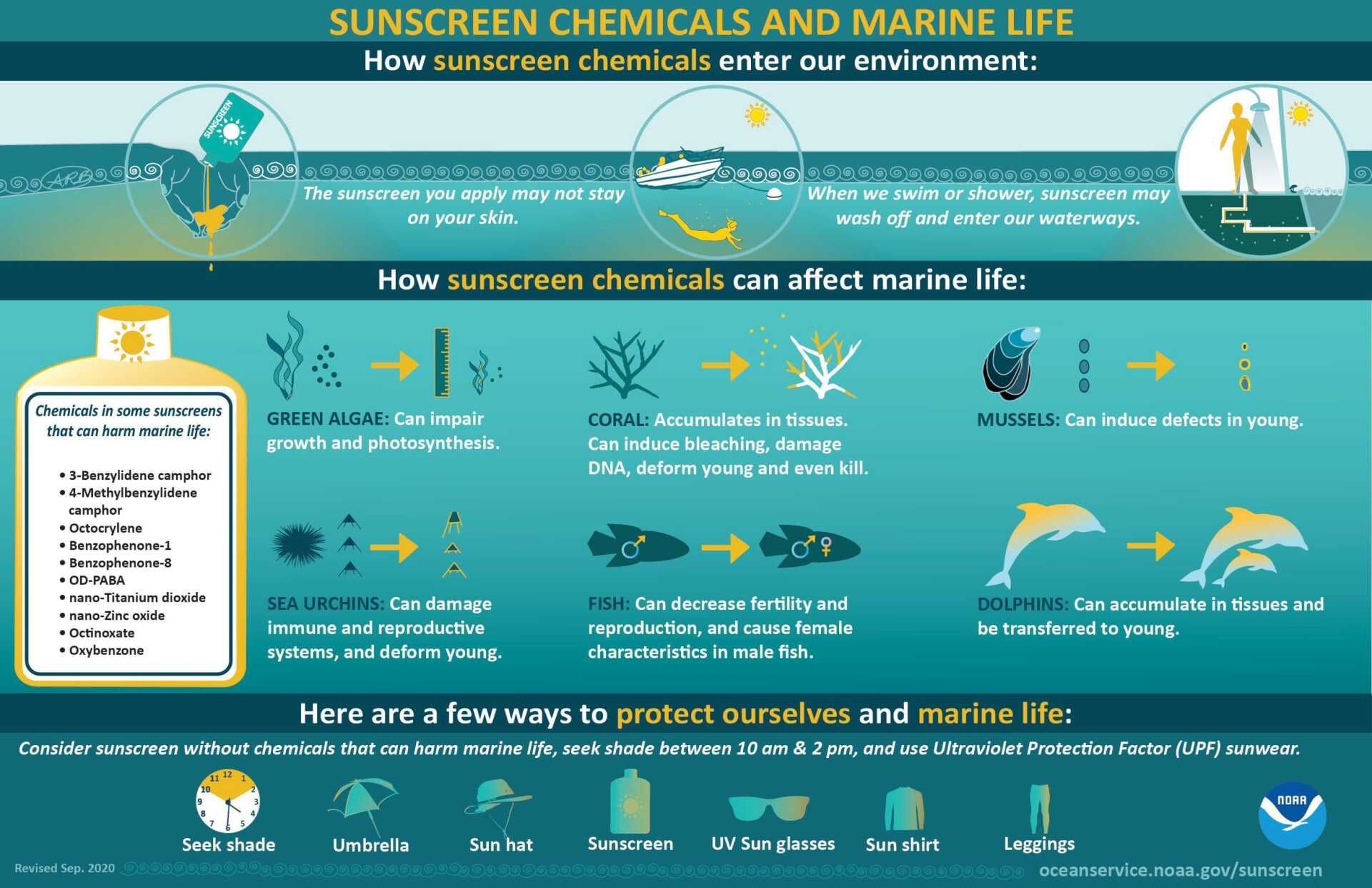SUNSCREEN REGULATIONS
Effective January 1, 2021, Hawaii State law prohibits the sale, offer of sale, and distribution of sunscreens that contain the chemicals oxybenzone and octinoxate in the Hawaiian Islands. The purpose of this law is to preserve marine ecosystems, including coral reefs.
Infographic Transcript: Sunscreen Chemicals and Marine Life
- How sunscreen chemicals enter our environment: The sunscreen you apply may not stay on your skin. When we swim or shower, sunscreen may wash off and enter our waterways.
- How sunscreen chemicals can affect marine life:
- Green Algae: Can impair growth and photosynthesis.
- Coral: Accumulates in tissues. Can induce bleaching, damage DNA, deform young, and even kill.
- Mussels: Can induce defects in young.
- Sea Urchins: Can damage immune and reproductive systems, and deform young.
- Fish: Can decrease fertility and reproduction, and cause female characteristics in male fish.
- Dolphins: Can accumulate in tissue and be transferred to young.
- Chemicals in some sunscreens that can harm marine life include: Oxybenzone, Benzophenone-1, Benzophenone-8, OD-PABA, 4-Methylbenzylidene camphor, 3-Benzylidene camphor, nano-Titanium dioxide, nano-Zinc oxide, Octinoxate, Octocrylene
- Here are a few ways to protect ourselves and marine life: Consider sunscreen without chemicals that can harm marine life, seek shade between 10 am & 2 pm, and use Ultraviolet Protection Factor (UPF) sunwear.

Infographic: Sunscreen Chemicals and Marine Life. Transcript | Download

